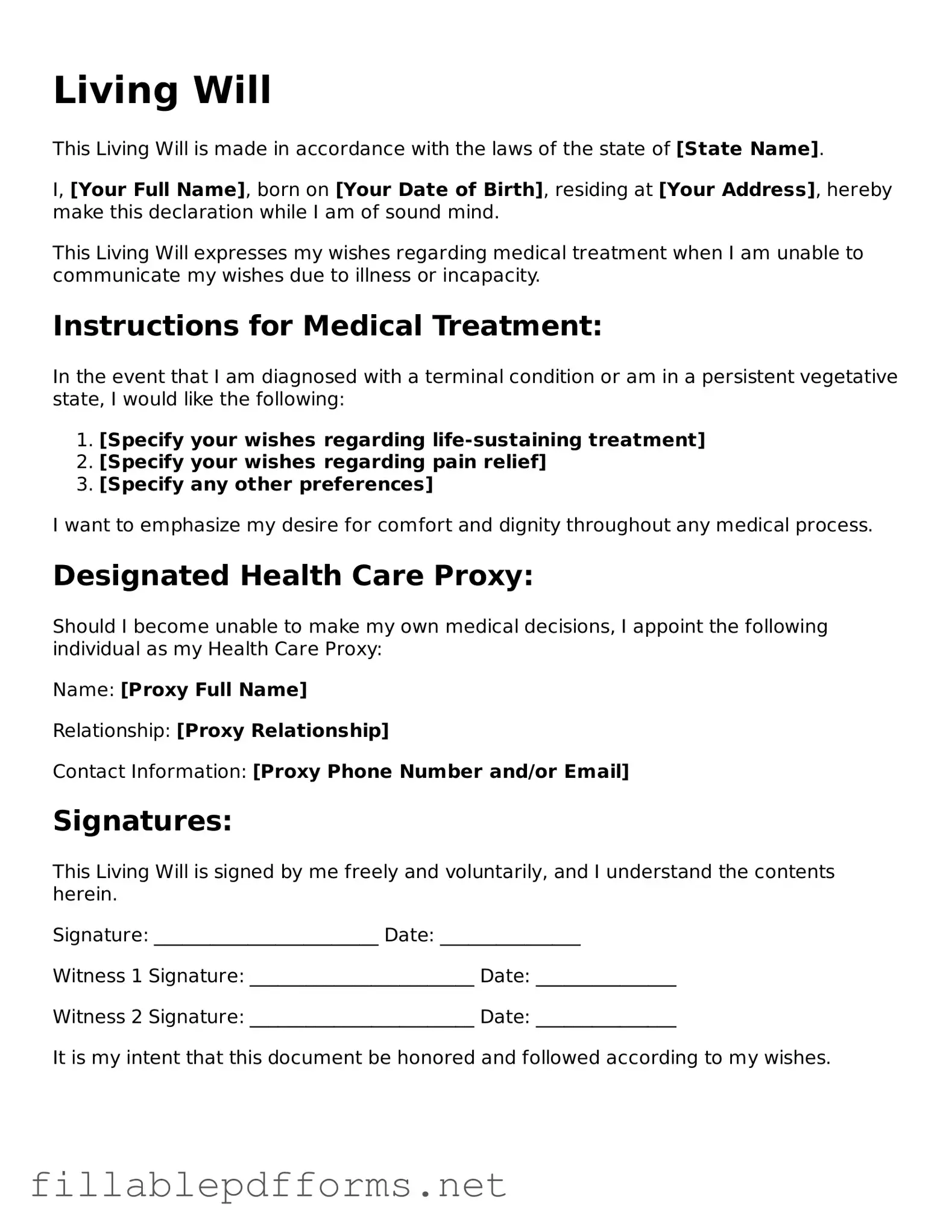Blank Living Will Template
A Living Will is a legal document that outlines an individual's preferences for medical treatment in situations where they are unable to communicate their wishes. This important form guides healthcare providers and loved ones in making decisions about life-sustaining measures, ensuring that a person's values and desires are respected. Understanding the Living Will is crucial for anyone looking to take control of their healthcare decisions in advance.
Launch Editor Here
